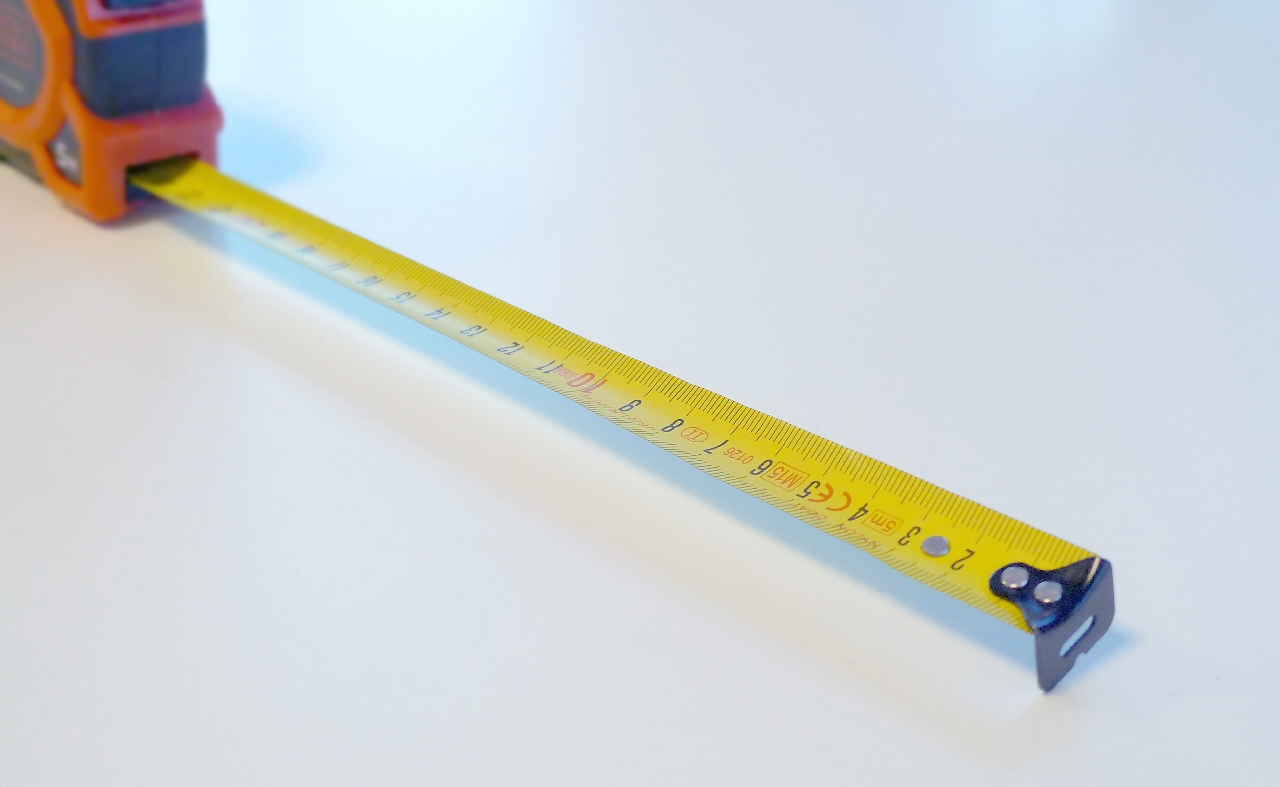The Startups Team
Continuing in Phase Three of a four-part Funding Series:
Phase One - Structuring a Fundraise
Phase Two - Investor Selection
Phase Three - The Pitch
Part 1 - Anatomy of a Pitch
Part 2 - Market Size (←YOU ARE HERE 😀)
Part 3 - Revenue Model
Part 4 - Operating Model
Part 5 - Customer Definition
Part 6 - Customer Acquisition
Part 7 - Funding
Part 8 - Key Pitch Assets
Part 9 - Traction
Phase Four - Investor Outreach
This is Part 2 of “The Pitch” — where we look at market size, how to go about estimating market size, and presenting potential market size.
Let’s dive in!

Market Sizing
Solving the Problem beautifully is nice and all, but if the Market Size of the Problem isn't big enough, you're not likely to get investors very excited.
The Market Size explains just how much potential for growth your startup has. Investors want to know you're solving a painful problem in a giant market. If you can combine those two factors, you'll generate a lot more interest from investors. When we can credibly estimate market size data and show that we can command a large market share within the target customer population — we've got a great story to tell, in your pitch deck and beyond.
Warning: This Gets Confusing
The problem starts when people don’t realize they are using different business terms interchangeably. Are you being asked how many target customers could potentially use your product or how many people will use your product? Nearly every person on the planet may have the ability to watch Netflix, but that doesn’t mean the total market for Netflix is the entire population of Earth! Just because they COULD be a target customer doesn't mean they ARE a target customer.
There are some nerdy things you can skip when it comes to presenting your business plan or pitch deck market size slide, but properly estimating market size isn’t one of them. So let’s make sure you understand the differences before you start your market research.

The Three Pies of Market Size
Your Market Size is broken into three pies from big to small (sometimes referred to as top-down market sizing):
Total Addressable Market (TAM).
Addresses the question: “How many people could potentially use this product?” It doesn’t mean how many people will use your product. This is the market size question you’ll get asked the most, and the numbers in TAM market size estimates are often the most wrong. We’ll get to that later.
Served Addressable Market (SAM).
Filters the whole TAM by how many of those target customers you can actually acquire. Remember you can only serve as many customers as your sales and marketing channels will acquire. You can’t serve customers who have never heard of you!
Target Market.
Determines who are your most likely target customers. Imagine you ran a banner ad online and presented it to 100 people. They all watch movies. Which of those 100 is most likely to click and buy? That’s your target market — that's where you'll find your ideal target customer.
Startup Companies start from an initial Target Market and then grow as their Served Addressable Market volume expands, usually as they have more financial resources to expand sales and marketing. In most cases, they never grow to their Total Addressable Market because they face competition, changing buying behaviors, and product obsolescence.

Getting This Less Wrong
Estimating Market Size is hard. You’re probably going to get it wrong, and that’s mostly OK. In a perfect world, you could simply Google “Market Size for the Product I invented 9 seconds ago” and you’d get stats, charts, and graphs that would make the nerdiest MBA swoon. Chances are, you won’t find any of that.
You may not have access to the right research or you may be inventing in a space that does not yet exist. In each case, you’ll still need to draw from available sources of information that could give you some baseline for how many customers exist. How much value any given market is a direct function of the market size calculation, as potential revenue is driven by potential customers. Calculating market size accurately may be impossible at the early stage of your startup venture, but its important to get as close as we can.
We will explore how to derive your market size later in the article on “Customer Definition”. For now, just recognize that having an accurate estimation of your Total Addressable Market (TAM) will be important. For our purposes, we’re going to build our pitch example around the largest data pie – TAM – and you will most likely do the same for your startup venture.

Making Market Size Matter
Once you’ve gathered enough data to build a reasonable TAM you can then get back to the business of constructing your pitch using this new key ingredient.
How you apply this key ingredient makes all the difference in the world. Watch what happens when we reduce the size of Netflix's TAM by just modifying the Problem statement to make it a waaaay too specific using a bizarre 1980’s movie:
"For fans of Fletch, going to the video store requires fighting traffic, wandering the aisles and waiting in long lines just to get see Fletch.”
We haven't even explained the Solution yet and already you're probably thinking "How big of a business could you build on helping people rent Fletch? I mean hey, it's a good movie, and probably a seminal work by Chevy Chase, but c'mon!"
You’d be right. Unless we want to build a company around a single movie, we haven’t applied the problem to a big enough market. If we want to make the market size matter, we have to point the problem to where the biggest addressable audience is.
Now let's try that again, only this time we'll use a much larger Market Size:
"For over 90 million Americans going to the video store requires fighting traffic, wandering the aisles, and waiting in long lines just to get a single movie.”
Notice how with just a small modification we gave you have a real good indication of how big this Problem really is in the potential market. 90 million Americans represent a lot of dollars spent. Even if you don't entirely understand the problem, you can certainly understand that 90 million people probably add up to a pretty big market opportunity.
You don't need to have the world's largest potential market, but be mindful of going after a total market that is obviously too small (like the people renting Fletch) for fear of turning people away before they even have the opportunity to hear you out.

The Elevator Pitch
Now we've got a nice understanding of the Problem, Solution, and Market Size. The next step is to distill that explanation down to an easy-to-remember bite-sized sound bite that still covers all the bases. This is also known as the “Elevator Pitch,” a quick way you can explain your business to someone in 60 seconds or less.
Here’s our Elevator Pitch:
"For over 90 million Americans (Market Size), going to the video store requires fighting traffic, wandering the aisles, and waiting in long lines just to get a single movie (Problem). Netflix allows anyone to enjoy thousands of titles streamed directly to their home or delivered to their mailbox. (Solution)”
Over time we are going to work on paring that down more and more. Maybe after talking to enough people, we notice they don’t react to the part about standing in line, so we nix that. Or perhaps they ask about how much it costs, so we modify our pitch to include the pricing.
The structure we used to get here is just a way to frame your thinking, not an absolute requirement for what you can or cannot say.
Using your Elevator Pitch
Your pitch may be one of the single most important tools you use to communicate your brilliant idea to the world. Most great pitches you hear, like famous advertising slogans, are the result of countless hours spent refining, gathering input, and refining some more.
The key to getting it right is to test it often. Give the pitch to anyone who will listen. The changes you’ll need to make will quickly become obvious when you keep getting asked the same questions.
A well-rehearsed and smooth pitch will open all kinds of doors for you. It’s well worth the investment.
Product (How it Works)
Explaining your product is a delicate balance between providing enough excitement around how amazing the product is and not droning on about every last detail.
Your goal here is to get your audience excited about why the product is special — not necessarily offer every painstaking detail about how it works. Think of it like being at a car dealer showroom and having the salesman explain to you why some shiny sports car is so awesome.
Sell the 'Special' First, Not the Details
As a customer, you want the big highlights — what special features does it have that make it amazing? Maybe it's got a state-of-the-art sound system (and you're a music lover). Or maybe it's got a 500-horsepower engine which makes it crazy fast (because if you're not first, you're last!). Or perhaps the styling and color make you dream of having it in your garage.
That's really all you need to know to get your checkbook out in most cases.
Now maybe that's not enough for you. Maybe you're a total gearhead and you want to know the cubic inch size of the engine block, the braking power from full speed, and the specific type of transmission it uses with gear ratios. But there's probably a 99% chance you're not that person.
In a similar fashion, chances are your audience (most likely an investor) doesn't want to know the super specific details. They want to know why the product is special. You can of course provide both, just extract the overview from the detail so you don't overwhelm most of your audience but don't come up short with special use cases.

Perfecting the Highlight Reel
Packaging your product offer into something beautiful comes down to a fairly simple exercise that you can use to make sure you're limiting your pitch to only the best elements.
The exercise starts by listing out all the benefits that your product has. There may be many, but the list doesn't have to be every last detail — it just has to be comprehensive enough so that you can pick the best features.
A common mistake is to try to cover every possible feature. This leads to a really unwieldy approach. Imagine I was pitching the idea of a word processor (a la Microsoft Word) in the '80s.
A terrible pitch would look like this:
"Our new product, Microsoft Word, will allow users to instantly make changes visually, offer spell check in real-time, a broad array of formatting options, add tables, insert charts, add images, display a print preview, change fonts, adjust headers and footers, save to multiple formats, and automatically show pagination."
Whoa, holy cow! That's an amazing innovation compared to the typewriters many were using at the time. However, only a fraction of those features are really what makes the product special.
Compare your Best
The second exercise is to take all of those features and ask yourself "Which of these is really what makes the product the most special?"
In this case, being able to avoid using a typewriter or crappy word processing machine at all is the big win. Therefore, all of the features that don't center around replacing the incumbent solutions can get punted to the detail description.
When you strip away only the best features you start to get a more accurate feel for what really makes this product special:
"Our new product, Microsoft Word, will allow users to visually compose their document on a PC and make infinite changes in real-time, making the need for typewriters and clunky word processors obsolete."
Once you've led with the heart of why this new product is so special, then you can get into the details. But before you do that, you have to be able to frame the use case of the product.
Making a (Use) Case Out of it
The best way to support an explanation of how your product works is to first give people a relatable sense of how your customer would use it. To do that well you will need to start by helping your audience understand exactly what frustration your customer has.
You've seen this technique a million times even if you've never realized it.
Remember those awful "As Seen on TV" spots that ran late night which start out the same "Do you have this awful problem? (cue overly-frustrated person shot in black and white trying to do some everyday task with a massive amount of frustration!)
They are trying to frame the problem in a way that is relatable to the most number of people. While the technique comes across as fairly cheesy in this instance, the goal is quite simple — put your audience in a position where they absolutely can relate to the issue. This is the same technique you would have used when framing the "Problem" and comparing it to the Solution.
Here's how we'd do it for our world-changing Microsoft Word pitch:
"Jim works at BigCo and he's responsible for creating and sharing dozens of TPS reports every week. The reports are fairly similar yet he's stuck with a blank sheet of paper every week slowly typing each out on his 1960's era typewriter. No matter how efficient he gets with putting together his information, he still spends 15-20 hours per week actually typing up the information to share. If he makes mistakes such as spelling or formatting errors, he has to start all over from scratch."
Boy, that sounds miserable. Poor Jim. We can easily envision how awful it would be to have to repeat these tasks over and over. What's more, we can easily imagine there are lots of people working in big corporations that have to go through the same headache.
Once you've established the Use Case Scenario, now you're in a great position to dig into the details of your product in the "Winner Walkthrough."

The Winner Walkthrough
The Winner Walkthrough is where you slow things down a touch so that you can highlight each and every feature as it relates to the problems that your customers so dearly face.
Now you get to dig into the product details, but only in context for how it affects Jim so that the points are more relevant. If it feels like the "Jim" Use Case is too narrow, you can expand the Use Case to be more encompassing or you can provide a few different Use Cases that then highlight the features that apply more specifically. This is often done when you have multi-sided marketplaces that involve benefits for both Buyers and Sellers.
Let's do a walkthrough for Jim:
"Jim has now switched over to using Microsoft Word on his top-of-the-line 286 PC with state of the art floppy drive. While he waits a good 20 minutes for his computer to boot up (Sorry Bill Gates, we haven't forgotten) he gets his reports together.
Once Jim gets started, instead of having to re-create last week's report from scratch, he simply brings up a saved copy of that report and makes a few small edits, saving him easily an hour in the process for every report.
He then creates a new report, quickly adjusting formatting, tables, and images that used to take him an entire day to lay out manually. He does this all in less than an hour. That time savings is then multiplied by every additional report he uses with this template.
Instead of hoping his edits all work the first time when printed, Jim can make multiple iterations and use the "Print Preview" feature which gives him a visual reference check of exactly what the final product will look like before printing."
We've just covered some of the biggest features, but instead of isolating that presentation to just the features, we've directly woven them into a narrative that people can relate to. You can see why people like Jim would be wildly excited about these features because you understand exactly what was wrong before.
This isn't to say that you can't list the features themselves or provide standalone explanations. It's to say that if you can frame context you put the story that's in your head into other people's heads. People remember stories, not bullet points.
The Secret Sauce
At this point, you may also want to get into the "Secret Sauce" of what makes this product work. However, you don't always have to. Many Founders like you get nervous about sharing the secret sauce for fear that it will be stolen. While this almost never happens, it's still a prevalent concern for many.
If investors like what the product can do, they will ask about the Secret Sauce. You can make that a separate document that you only share with people who express that deliberate interest.
How you present the secret sauce will vary wildly from product to product, whether it's your famous recipe for BBQ sauce or the source code for the software. It could also be less product related, such as how you acquire customers or how you manage costs.
The Wrap Up
Once you've established the big benefit, the use case, and the walk-through, don't ignore the wrap up.
The Wrap Up is where you re-iterate how the product works, but also incorporate the established Use Case as well as hint toward the size of the opportunity this product can provide. For example:
"Microsoft Word will fundamentally transform how documents are created. Within businesses alone, there are over 100 million people like Jim globally facing the same problem, with tens of millions more entering the workforce every year. We envision that within a decade every typewriter and existing dedicated word processor will be replaced by a copy of Microsoft Word."
Make the ending your own. Draw your conclusion and frame it accordingly. Do not leave the big conclusion a big mystery, and don't assume your audience will have the same conclusion. You've been working on this for years, they've been listening for 20 minutes. It's your job to paint the exciting future, not theirs.

The Final Product
If you zoom out you can start to see a fairly specific cadence and structure that you can use for your Product pitch:
Overview
Short, declarative explanation about the most valuable feature of your product.
Use Case for Target Customers
A narrative to explain the real frustrations a user has and some context for why they are so frustrated.
Winner Walkthrough
A detailed explanation of how your product benefits would be a huge win for the frustrated customer you just mentioned.
Secret Sauce
An optional detailed description of what you're doing that makes the product so unique.
Wrap Up
Your vision for how this product could affect so many people in the future.
If you can stick to this formula you should be able to convey a story that's both digestible and memorable whether you are explaining this to an investor using a pitch deck, or talking to a potential customer, partner, or hopeful hire.
Continue to Part 3 - Revenue Model
Find this article helpful?
This is just a small sample! Register to unlock our in-depth courses, hundreds of video courses, and a library of playbooks and articles to grow your startup fast. Let us Let us show you!
Submission confirms agreement to our Terms of Service and Privacy Policy.
No comments yet.
Start a Membership to join the discussion.
Already a member? Login